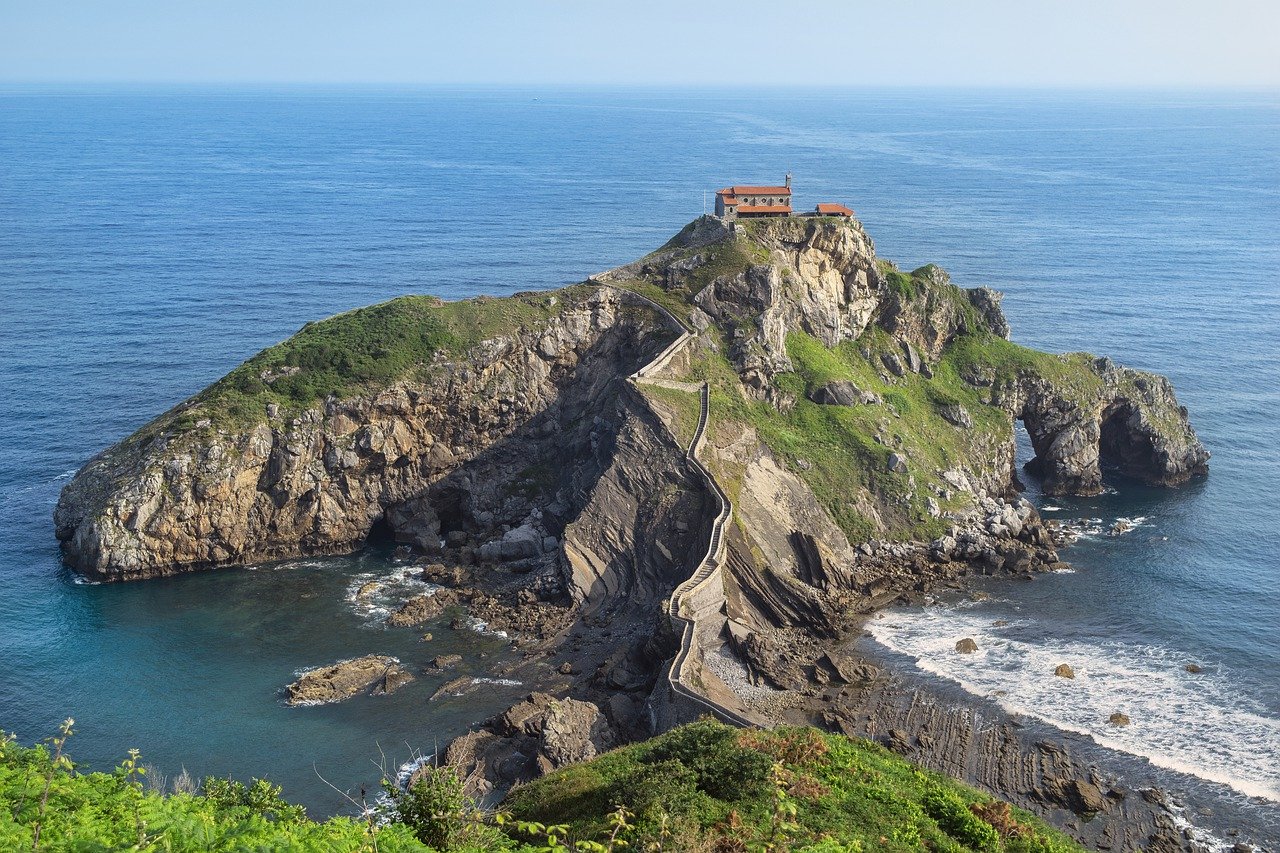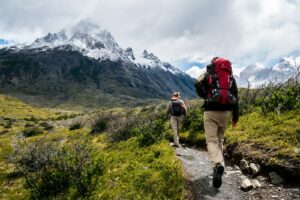Whose it is the region with the highest wine production in Argentina. The two main provinces are Mendoza and San Juan in the western part of the country (the competition between these two provinces is crazy!).
My initial plan was to visit only Mendoza, but one morning in Cordoba I woke up and decided to change course, so I bought a bus ticket and eight hours later here I am.
I couldn’t have made a better choice, the San Juan region is simply incredible.
It’s not a common tourist destination for non-Argentine travellers: the climate is semi-desert and the heat can become unbearable; the location of this city is remote; speaking in English is practically impossible, there are no “fashion” restaurants in these parts and to be able to visit the surroundings and the region you need a car or you have to rely on tours, which in recent years have begun to gain ground even though the organization is much more limited than Patagonia.
Beyond these limitations, San Juan has a lot to offer and is worth a few days. I’m sure this precious region will become one of your favorites!
If you are planning a trip to Argentina read the posts How to organize a trip to Argentina and What to see in Patagonia
Have you found plane tickets? See also on Traveljourn
Read also: 10 Top-Rated Tourist Attractions in Argentina
Ishigualasto Provincial Park (La Valle de La Luna)
Il Ishigualasto Provincial Park, land of dinosaurs also known as Valle de la Luna. It is part of the heritage sites of UNESCO. It contains late Triassic remains and some of the oldest dinosaur fossils. I wrote a dedicated post about this destination, read How to visit Ishigualasto Provincial Park
The park can be visited either with a rental car or with a organized tour, like this one. The area is very remote and not served by public transport.

Talampaya National Park
Talampaya National Park was designated a provincial reserve in 1975, a national park in 1997 and finally a UNESCO World Heritage Site in 2000.
The park which protects an area of the Monte Argentino ecoregion, offers impressive and beautiful landscapes with flora and fauna typical of the mountain biome.
Positioned in a basin between Cerro Colorados and the Sierra de Sañagasta, the landscape is the result of water and wind erosion in a desert climate, and significant temperature variations, high heat during the day and low temperatures at night and torrential rains in summer and strong winds in spring.
The park includes:
- The dry bed of the Talampaya River
- The Talampaya Gorge and its rock formations with walls up to 143 m high
- The remains of the settlements of the indigenous populations, such as the petroglyphs of the Puerta del Cañón
- A botanical garden of local flora in the narrow point of the canyon
- Regional wildlife, including guanacos, hares, maras, foxes and condors
If you are traveling to the region. I highly recommend you visit it and also include the truck trip to the bottom of the Canyon.
You can reach the park by car or with a daily tour starting from San Juan.
La diga di Ullum
The tell me any. The dam itself is not very interesting, but in its vicinity there is a trekking area called Tres Marias Hill, which is pretty amazing. It passes through two different types of landscape, one of which is entirely in red clay rocks. The view of the lake from the top of the mountain is spectacular.

The pagan sanctuary of Difunta Correa (Vallecito)
The pagan sanctuary of Late Correaa legendary semi-pagan figure in the popular religion of Argentina and Chile. Every year since its inception in 1840, miracles are said to have occurred at the sanctuary of La Difunta Correa, and thousands of people go there to pay homage.
The saint is not recognized by the church but her devout followers believe she performs miracles and intercedes for the living. The streets of the town are full of images and sculptures of the saint with bottles of water next to her quench his thirst for eternal life.
The sanctuary of Vallecito has 17 chapels, decorated with plaques of devotees.
In the chapel located at the top of the hill there is a life-size statue of the saint reclining with her child at her breast.
What makes the chapels special are their themes, for example the one full of wedding dresses left by women who managed to get married (through his intercession).
Visits to the Vallecito Sanctuary of La Difunta Correa take place throughout the year, but reach their peak at Easter and November 2nd.
The legend of the Difunta Correa
Deolinda Correa in the 19th century, during the civil wars, followed on foot the battalion in which her sick husband fought. Her role was to bring food and water to the battalion while always holding her little son on her lap.
Once the supplies ran out, the woman died of starvation, right where the sanctuary is located today. Some passing muleteers found her with her baby at her breast, sucking milk and still alive. Hence the first miracle credited to her and the birth of the Difunta Correa myth.
San Guillermo National Park
With the Provincial Reserve of the same name, adjacent to the National Park, San Guillermo National Park constitutes the San Guillermo Biosphere Reserve administered by the United Nations Project El Hombre y la Biósfera (MAB).
This protected area belongs to the puna and high Andes eco-regions and, albeit marginally, to the mountains.
Both the vegetation and fauna of San Guillermo are known for their adaptability and resilience difficult conditions of high altitude and extreme aridity.
The plants are mainly shrubs, for example the tolilla, a small plant with large flowers, characteristic of the Andes and the endemic daisy also known by its scientific name Andean huarpea.
What makes this park truly special is the coexistence between two types of wild camelids: the vicuna and the guanaco.
They are distributed into sectors, probably to reduce competition between them.
The plains are the habitat for the vicuna while the rocky slopes are the habitat for the guanaco.
Both species have adapted to altitude and aridity so much so as to develop pads on the legs that reduce the erosive effect of trampling to a minimum and forming teeth to cut grasses without uprooting them, which facilitates their regrowth.
But other animals also live in the park, such as the Suri or Cordilleran ñandú, the Andean condor, the puma, the red fox and endemic species such as the chelco lizard and the so-called piche tail.

El Leoncito National Park
A trip to the Argentine Pampa, in the heart of Sierra del Tontal and in front of the Calingasta Valleythe park is a true oasis in the San Juan desert and is worth a visit.
Few places in the world can boast of having a sky like that of this place, it is no coincidence that one of the most famous astronomical complexes in the world is located here.
Alternatively, to concentrate the best of the region I recommend you take part in multi-day tours.
Advise
San Juan Wine Route (Strada del vino)
San Juan is the second largest wine producer in Argentina and represents approximately 15% of production. It is located less than 200 km north of Mendoza and most of its vineyards are positioned between 650-1400 meters above sea level.
Thanks to the dry climate and high altitude, the diseases that normally attack the vines are rare and, therefore, fewer chemical treatments are used, resulting in the use of organic grapes. The Syrah it is particularly comfortable in these parts.
The ‘official’ Wine Route is long 370 kilometers and includes 12 wineries. Most of them (if not all), offer free wine tasting (Bonus!).
To travel the Wine Route There are currently four methods available:
- Rent a car. Rental prices are very reasonable and you can choose which wineries to visit. However, the driver cannot drink!
- Book a tour of wine, if you can find a willing travel agency. Strangely they are still not very well organised, and it can be quite a difficult job finding a tour, but thanks to Civitatis, which allows local operators to sell their tours, things have become easier in recent years.
- Paying a taxi driver and get carried around. This is a good option and is quite cheap, but you have to be ready to bargain.
In short, the motto in San Juan is “Get out and explore!”
This city remains one of my favorite places.
Disclaimer: In this post, some of the links provided are affiliate links, which means I may earn a commission if you make a purchase through these links. However, this does not incur any additional cost to you. The commissions I receive through these affiliate links they help fund and support my blog, thus maintaining its independence and lack of sponsorship. I always strive to provide you with the best information and advice possible, based on my personal experience and research. I would like to underline that your support is essential to keep this blog alive and continue to provide you with quality content. Thank you for your support!
Read also: What to see in Buenos Aires in 2 or 3 days
11 Top Rated Ontario Parks: Exploring Ontario’s Great Outdoor
Guide and the best tours to consider
Follow us on facebook
Are you getting ready to travel? Check out these useful!!
Cheap flights
hotels
Don’t forget your travel insurance!
Car rental with Economybookings.com





